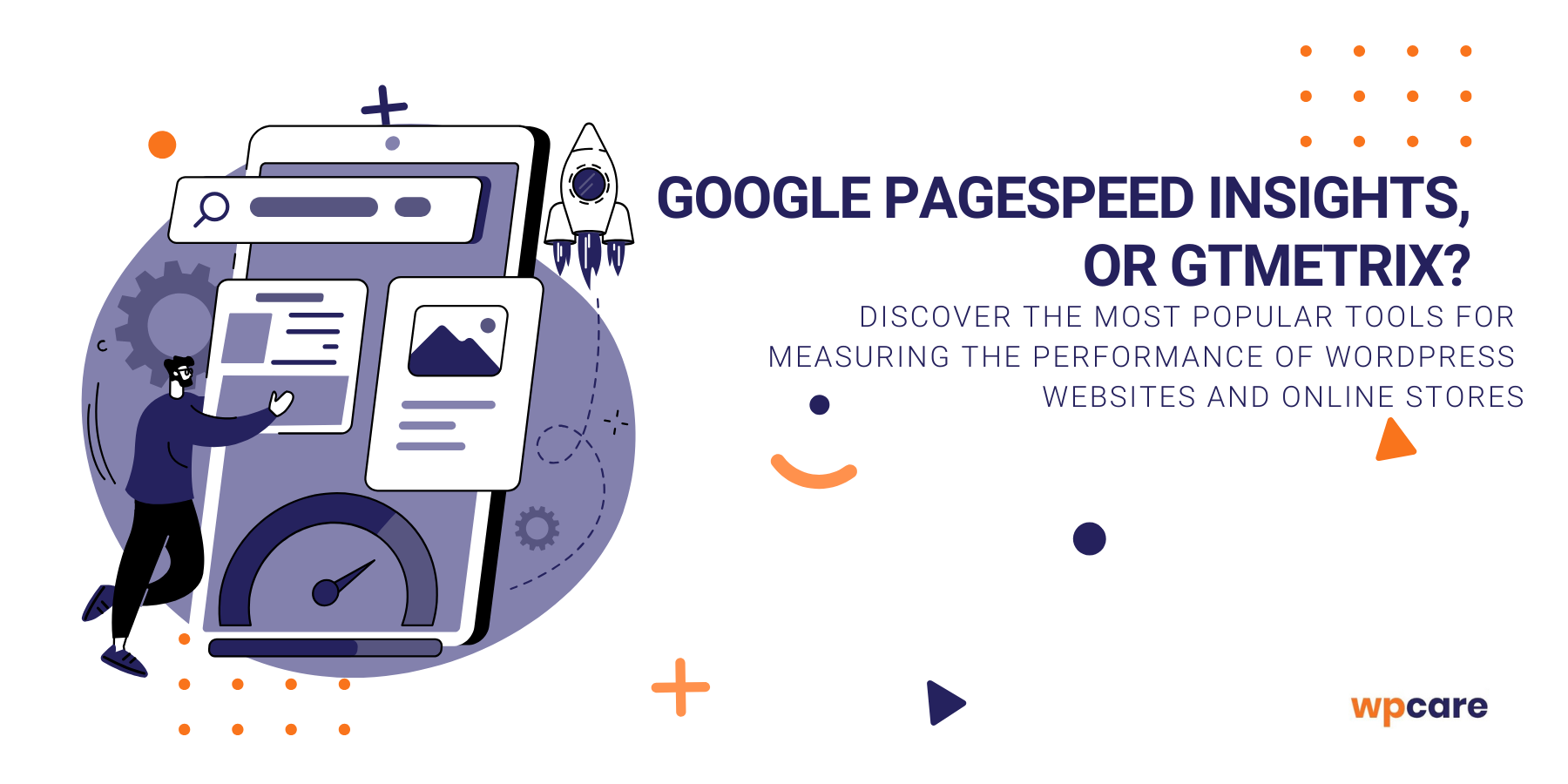Fast-loading websites not only capture the attention of users, but also affect their experience and the site’s ranking in search engine results. Therefore, it is crucial to continuously monitor and optimize your site’s performance. To achieve this, performance analysis tools are used, and two of the most popular ones are Google PageSpeed Insights and GTmetrix. In this article, we will take a closer look at these tools, discuss their differences, advantages, and disadvantages, and learn why it’s worthwhile to use them to ensure an excellent experience for your website visitors.

Google PageSpeed Insights (PSI) – key information
Google PageSpeed Insights is a tool developed and offered by Google, which was first launched in 2010. Its main function is to measure page load speed and overall performance on both mobile and desktop devices, as well as to provide optimization suggestions to improve the results.
PSI operates using the Lighthouse technology – an open-source, automated platform that evaluates website performance by analyzing it in 4 main areas:
- Page load speed,
- Mobile-friendliness,
- SEO compliance,
- Adherence to best practices regarding accessibility.
The performance in each area is rated on a scale from 0 to 100, separately for mobile and desktop versions.
GTmetrix – key information
GTmetrix is a tool created by GT.net, also released in 2010. It offers a wide range of analyses concerning website performance and overall quality. Similar to PSI, GTmetrix provides scores and recommendations for optimization using various metrics such as Largest Contentful Paint (LCP), Cumulative Layout Shift (CLS), and Total Blocking Time (TBT).
This tool helps users understand the aspects that significantly affect the experience of visitors on the analyzed website. An additional feature is the ability to run tests from different geographic locations and in various browsers, which gives a more holistic view of the site’s performance.
Main differences
- Metrics and data: PSI focuses mainly on page load speed and optimization, while GTmetrix offers a broader range of performance data.
- Location and browser options: GTmetrix allows you to choose different locations and browsers, which is particularly important for analyzing websites with an international audience.
- User interface: GTmetrix provides an advanced and detailed interface that enables extensive configuration. In contrast, the PSI interface is much simpler and more minimalist.
- Test history: GTmetrix stores a history of tests, allowing you to track your optimization progress over time, a feature that PSI lacks.
- Pricing plans: GTmetrix offers both free and paid plans with additional features, whereas PSI is completely free.
- Native integration with Google tools: PSI is built on the Lighthouse platform, ensuring consistency with other Google tools, while GTmetrix uses its own set of analytical tools.
- Data visualization: GTmetrix offers more advanced data visualizations through charts and tables.
- Test customization: GTmetrix allows for greater customization of tests, including changing locations, browsers, and other settings that can affect the results.
Key advantages and disadvantages
Google PageSpeed Insights
Advantages:
- Free: PSI is completely free, making it an attractive choice for developers and website owners with limited budgets.
- Lighthouse technology: Being based on Lighthouse, PSI offers a wide range of analyses, including SEO, accessibility, and best coding practices.
- Precise optimization suggestions: Specific optimization recommendations make it easier to identify areas for improvement.
Disadvantages:
- Limited features: It lacks some advanced functionalities available in GTmetrix, such as test history and location customization.
GTmetrix
Advantages:
- Detailed reports: GTmetrix provides comprehensive data sets and detailed reports, which can be extremely valuable for advanced users.
- Test history: The ability to track test history is excellent for monitoring optimization progress over time.
- Customizable tests: The option to adjust test settings such as location and browser yields more accurate results in various scenarios.
Disadvantages:
- Paid features: Many advanced features are available only in the paid plans.
Why use performance measurement tools?
Both Google PageSpeed Insights and GTmetrix offer invaluable insights that can significantly help improve the performance and quality of your website, thereby enhancing user experience.
- Diagnostics and optimization: These tools enable you to identify performance issues and suggest specific solutions, which in the long term can improve page load speeds and overall user experience.
- Improved SEO rankings: Page speed is an important ranking factor for Google, so optimizing your website’s performance can contribute to better search engine positions and increased organic traffic.
- Enhanced user experience: Fast-loading pages provide a better user experience, which can lead to higher retention rates and increased conversions.
Summary
Performance measurement tools for websites, such as Google PageSpeed Insights and GTmetrix, have become indispensable for developers, administrators, and website owners. They provide invaluable data that helps improve page load speeds, enhance SEO rankings, and ensure a better user experience. The choice between PageSpeed Insights and GTmetrix depends on your individual needs and preferences, but regardless of which option you choose, it is essential to test and optimize regularly to ensure your website remains fast, attractive, and competitive in today’s digital world.
Need help interpreting your WordPress performance results from Google PageSpeed Insights / GTmetrix? Looking for support in implementing the recommendations and optimizing your website’s speed?
Contact us, and we will definitely help you!




















































